Resnick & Halliday Solutions for Chapter: Electromagnetic Waves, Exercise 1: Problems
Resnick & Halliday Physics Solutions for Exercise - Resnick & Halliday Solutions for Chapter: Electromagnetic Waves, Exercise 1: Problems
Attempt the practice questions on Chapter 33: Electromagnetic Waves, Exercise 1: Problems with hints and solutions to strengthen your understanding. Principles Of Physics International Student Version solutions are prepared by Experienced Embibe Experts.
Questions from Resnick & Halliday Solutions for Chapter: Electromagnetic Waves, Exercise 1: Problems with Hints & Solutions
We want to rotate the direction of polarization of a beam of polarized light through by sending the beam through one or more polarizing sheets. (a) What is the minimum number of sheets required? (b) What is the minimum number of sheets required if the transmitted intensity is to be more than of the original intensity?
In the figure, an unpolarized light is sent into a system of three polarizing sheets which transmits of the initial light intensity. The polarizing directions of the first and third sheets are at angles and What are the (a) smaller and (b) larger possible values of angle for the polarizing direction of sheet

In the figure, a ray is incident on one face of a triangular glass prism in air. The angle of incidence is chosen, so that the emerging ray also makes the same angle with the normal to the other face. Show that the index of refraction of the glass prism is given by,
where is the vertex angle of the prism and is the deviation angle, the total angle through which the beam is turned in passing through the prism. (Under these conditions the deviation angle has the smallest possible value, which is called the angle of minimum deviation.)

Suppose the prism of the figure (a) has apex angle and index of refraction (a) What is the smallest angle of incidence for which a ray can enter the left face of the prism and exit the right face? (b) What angle of incidence is required for the ray to exit the prism with an identical angle for its refraction, as it does in the figure (b)?
(a)
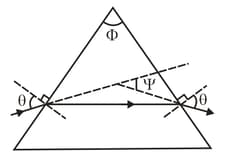
(b)
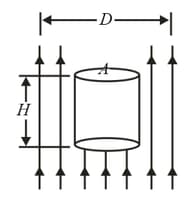
As a comet swings around the sun, ice on the comet's surface vaporizes and releasing trapped dust particles and ions. The ions, because they are electrically charged are forced by the electrically charged solar wind into a straight ion tail that points radially away from the sun (see figure). The (electrically neutral) dust particles are pushed radially outward from the sun by the radiation force on them from sunlight. Assume that, the dust particles are spherical, have density and are totally absorbing. (a) What radius must a particle have in order to follow a straight path like path in the figure? (b) If its radius is larger, does its path curve away from the sun (like path ) or towards the sun (like path )?
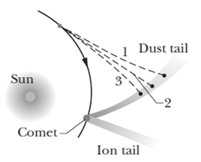
Rainbows from square drops. Suppose that, on some surreal world, raindrops had a square cross section and always fell with one face horizontal. Figure shows such a falling drop with a white beam of sunlight incident at at point The part of the light that enters the drop then travels to point where some of it refracts out into the air and the rest reflects. That reflected light then travels to point where again some of the light refracts out into the air and the rest reflects. What is the difference in the angle of the red light and the blue light that emerge at (a) point and (b) point (This angular difference in the light emerging at point would be the rainbow's angular width.)
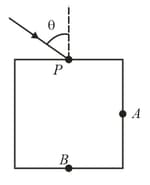
In the figure, a long vertical pole extends from the bottom of a swimming pool to a point above the water. Sunlight is incident at angle . What is the length of the shadow of the pole on the level bottom of the pool?
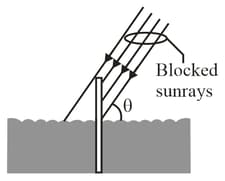
In the figure (a), a beam of light in material is incident on a boundary at an angle Some of the light travels through material and then some of it emerges into material . The two boundaries between the three materials are parallel. The final direction of the beam depends, in part, on the index of refraction of the third material. Figure (b) gives the angle of refraction in that material versus for a range of possible values. The vertical axis scale is set by and (a) What is the index of refraction of a material or is the index impossible to calculate without more information? (b) What is the index of refraction of material or is the index impossible to calculate without more information? (c) If is changed to and the index of refraction of material is what is
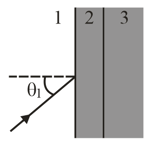
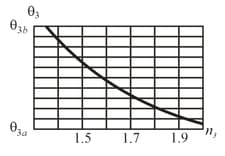
(a) (b)
